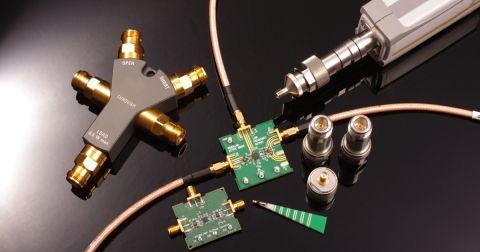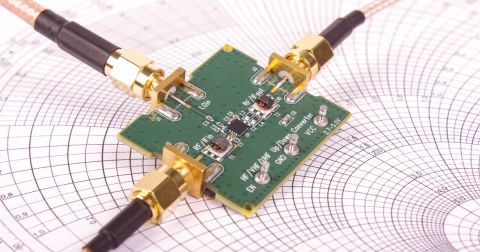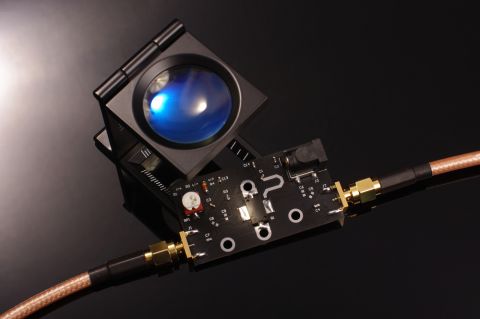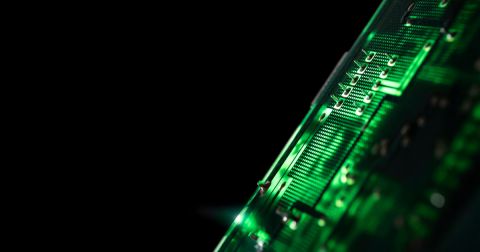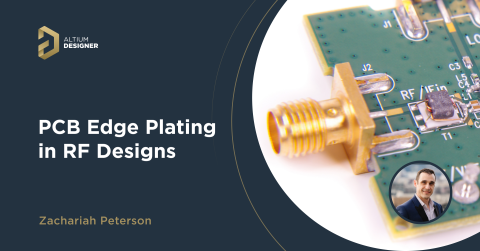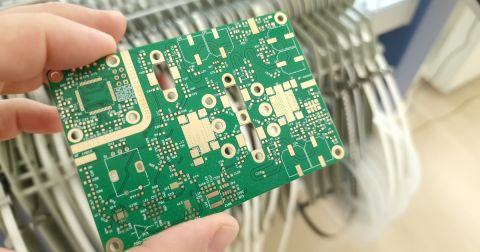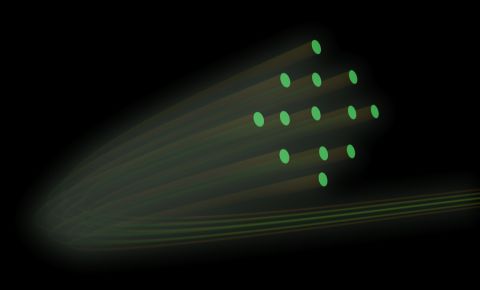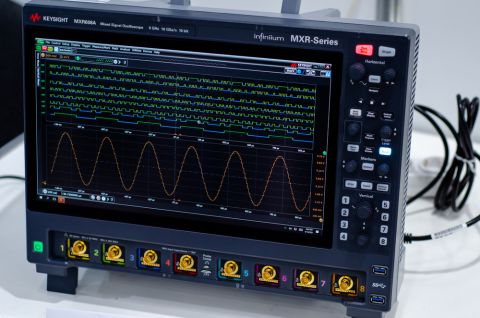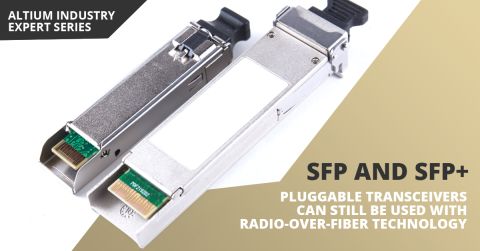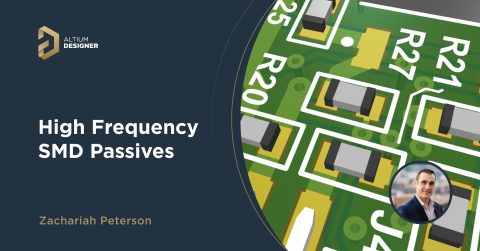Best Practices for High-Frequency PCB Materials Selection

High frequency PCB design can seem esoteric, and I've heard many an engineer describe it as "black magic"! The subject is also a bit confusing, especially once someone asks which frequencies could be reasonably considered "high". The reality is that some of the challenges present in high speed design also appear in high frequency design, but we think about them in different ways. Before you do anything inside the layout for a high-speed or RF PCB, you will need to pay attention to the materials being used in the board.
Most designers that need to build a PCB operating at radio frequencies will usually pick a low-loss FR4 laminate or low-Dk PTFE laminate, and then they will call it a day. Low-Dk is not always necessary, depending on frequency of course, and you could operate just fine with a standard laminate or poosibly a high-Dk laminate for your specific application. If you're unsure which high frequency PCB materials you should use, then keep reading to learn more.
Start With High Frequency PCB Material Properties
There are a few material properties that should receive focus when shopping for high frequency PCB materials. There are multiple vendors that produce these materials, and they all try to compete with each other based on the electromagnetic properties for the materials they produce. You can spot all of the material properties I'll specify below in the datasheest provided by the vendor.
Dk and Df (Loss Tangent)
This is probably the most common point everyone will start looking for when they dive into datasheets. Material vendors will report these values at specific frequencies, usually 1 GHz or 10 GHz, depending on the target market for the material. I think most designers will start looking for this specification because they will be operating with a system that needs to have low loss, so they will generally start by comparing dielectric loss values.
The important factor to focus on depends on the type of high frequency PCB you want to design:
- If your target is to make very small RF printed circuits, then you need a larger real part of the dielectric constant.
- If your target is low loss, then you should aim for low imaginary part of the dielectric constant.
If your interconnects will be very long and there is a risk of excessive losses, then you should use a material with a smaller imaginary part of the dielectric constant. The real part (Dk) has nothing to do with dielectric losses when the impedance is fixed at your target value. However, Dk does matter because it determines the wavelength of your operating signal in your high frequency PCB. Smaller circuits generally need a smaller wavelength, which means you will need a larger Dk value.

One important point that arises in any RF printed circuit that relies on resonance (such as waveguides, antennas, and resonators) is the direction of the electric field. The dielectric constant of substrate materials will be different along each axis in the material, therefore the dielectric constant that will determine wave propagation speed and resonance will depend on the direction of the electric field in the system. These differences might only be about 5%, but they matter in some high-Q structures like short resonators and emitters that support modulated signals. The dielectric constant value corresponding to different electric polarization directions should be specified in your material datasheets.
Available Thickness and Panel Size
This might sound a bit pedestrian, but high frequency PCB materials can't always be purchased in any thickness or panel size you want. These materials are generally copper-clad laminates with specific thickness, and multiples of these laminates can be stacked together with a bondply. They can also be used in a hybrid stackup with other FR4 laminates of similar thickness. The laminate thickness will then determine the total board thickness, as well as the copper trace/circuit linewidths you can use to route RF signals and create printed RF circuits on the PCB.
The thickness is most important because it will determine the linewidth that is required to hit your target system impedance. This is an important part of any RF PCB because components and any printed elements will overwhelmingly be designed to a 50 Ohm system impedance. Even if you're using impedance matching circuits to match printed circuit impedance to the system impedance, the substrate thickness will still determine the impedance mismatch you need to compensate in your matching circuit because it sets the distance to the ground plane on the next layer. Therefore, if you need to get to smaller circuit sizes and linewidths, you two levers you can pull:
- Use a larger Dk value to get smaller circuits
- Use a thinner laminate to get smaller circuits

If you're working with an external fabricator and you're drawing from their material stocks, then you'll be limited to their materials and you usually won't specify panel size. High volume fabrication houses are better about keeping diversified material stocks. The panel size will determine cost per unit as the panel can only fit a maximum number of boards, but trying to shop around fabrication houses based on panel size is pretty fruitless. If you can get larger or smaller panel sizes than the standard panel area, then consider it a convenient bonus and take the opportunity to order a few extra boards. If not, then don't sweat the panel size as it's a small detail.
Type of Copper Foil
High frequency materials may use a certain set of copper foil materials. These may be rolled-annealed copper or low-profile rough copper that is intended to provide the lowest possible losses. A good datasheet will specify the approximate roughness (normally the z-axis RMS roughness) so that you can estimate the approximate losses at your operating frequency. Generally smoother copper (smaller RMS roughness) is more desirable from a loss standpoint as it will create a smaller skin effect enhancement and smaller impedance deviation. If your interconnects are very short and you need smaller printed circuits, focus more on the Dk/Df pairing instead of the specific type of copper foil.
If you happen to be evaluating a particular high frequency PCB material and you need to get a sense of the conductor loss in the circuit, you can use a simple approximation for the propagation constant to estimate the conductor losses using the trace's DC resistance, skin effect, and copper roughness factor:

This formula tells you the per-unit-length power losses along the conductor. The skin effect and DC resistance can be determined from a calculator application, while the copper roughness factor K requires measurement or a standard roughness model to calculate.
- Learn more about using these formulas and estimating copper losses.
- Learn more about modeling copper roughness correction factors.
Smoother copper foil is universally more desirable in an RF PCB layout, but it's not the whole story. There is also the plating material to consider as these materials can introduce a rough interface in the copper layer that creates greater rough losses. There are two surface platings that can provide virtually no additional losses compared to bare copper: organic solderability preserve (OSP) and immersion silver (ImAg). Generally, if you're operating above 2.4 GHz Wifi or your interconnects are long, then you need to choose a lower-loss plating material.
Thermal and Mechanical Characteristics
These are often looked at later if the device you're building will not be placed into a high-reliability application. In certain types of systems, like in high frequency avionics, thermal and mechanical properties come first because devices might experience high temperatures, repeated thermal cycling, mechanical vibration, or shocks during operation. As an example, some of the high frequency devices I've built for aerospace clients have always used specific Rogers laminates due to their tensile modulus. Another material property that is desirable from the world of hybrid stackups is CTE matching; some PTFE materials could match CTE values very closely to FR4, so they will be appropriate for use in a hybrid PCB stackup.
Summary - Work With Your Fab Vendor!
There are many different materials on the market, even from some less-known vendors that aren't the go-to option for high frequency PCB laminates. If you've never been exposed to the wide world of low-loss glass-epoxy and PTFE laminates, read this blog on high frequency materials for microwave/mmwave devices. You'll see a long list of materials there that provides a good overview of the possible material options available for RF PCBs.
Just to close, remember that you can shop around for all the materials you want, but you can't use any of them unless they are in-stock with your fab vendor and they are compatible with their processing steps. Before you start your design, make sure to clear your stackup and material selection with your fab vendor. Not all fabrication houses will stock materials for microwave devices simply because they might not serve that portion of the market. The last thing you'll want to do is to get a design finished only to find out that your desired material sets are totally out of stock, and you have to adjust your carefully designed printed circuit elements to make sure you hit your loss and impedance targets.
Once you've located your ideal high frequency PCB materials for your RF system, you can use the Layer Stack Manager in Altium Designer included in Altium Develop to define your stackup, determine impedances, and create routing rules. You and your team will also be able to stay productive and collaborate efficiently on advanced electronics designs through Altium Develop. Everything you need to design and produce advanced electronics can be found in one software package.
Whether you need to build reliable power electronics or advanced digital systems, Altium Develop unites every discipline into one collaborative force. Free from silos. Free from limits. It’s where engineers, designers, and innovators work together as one to create without constraints. Experience Altium Develop today!

